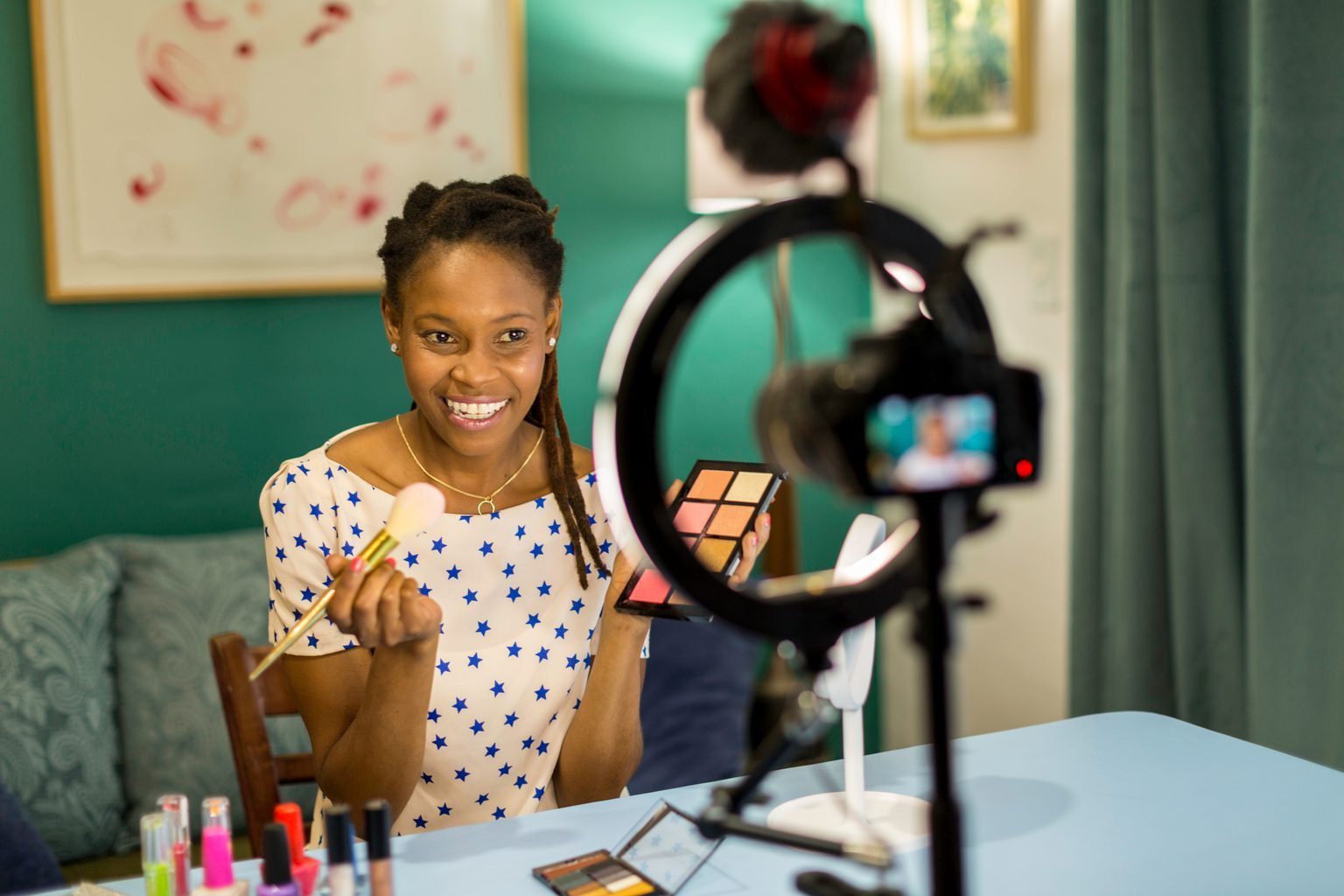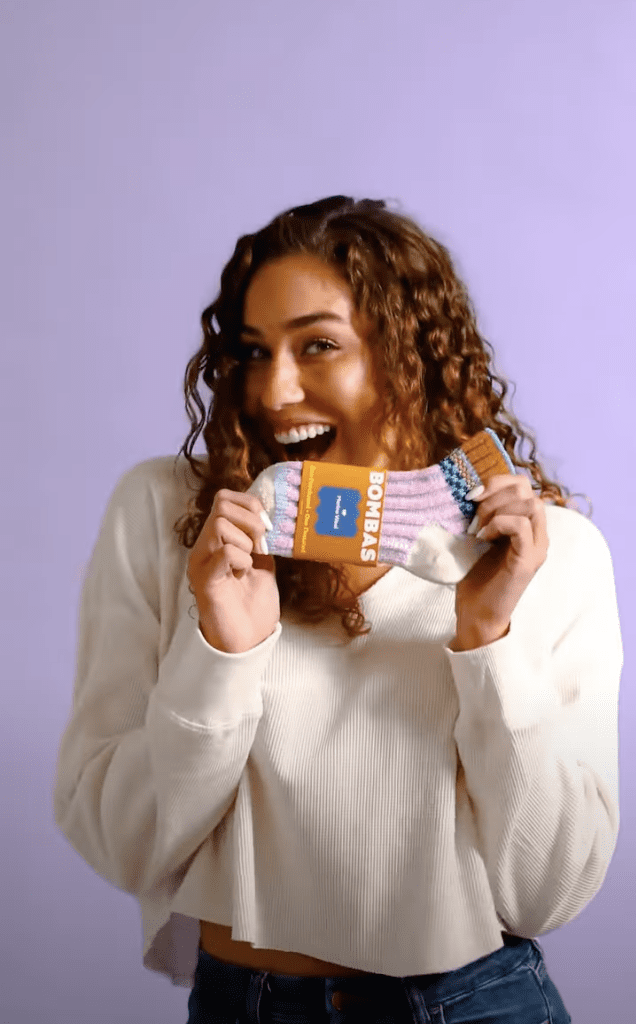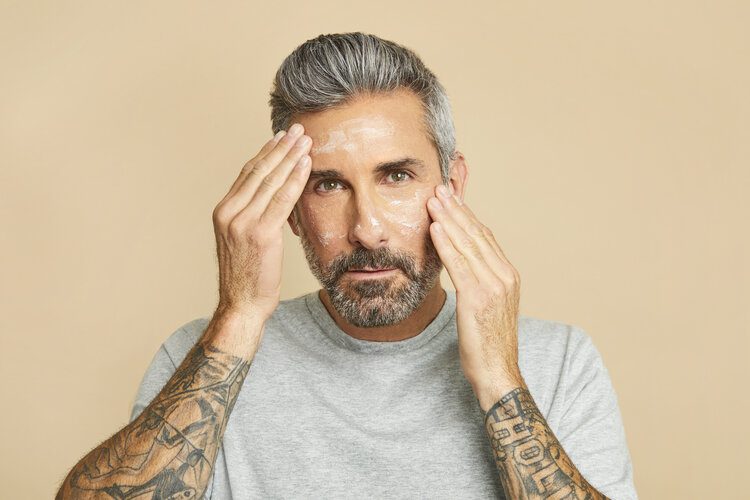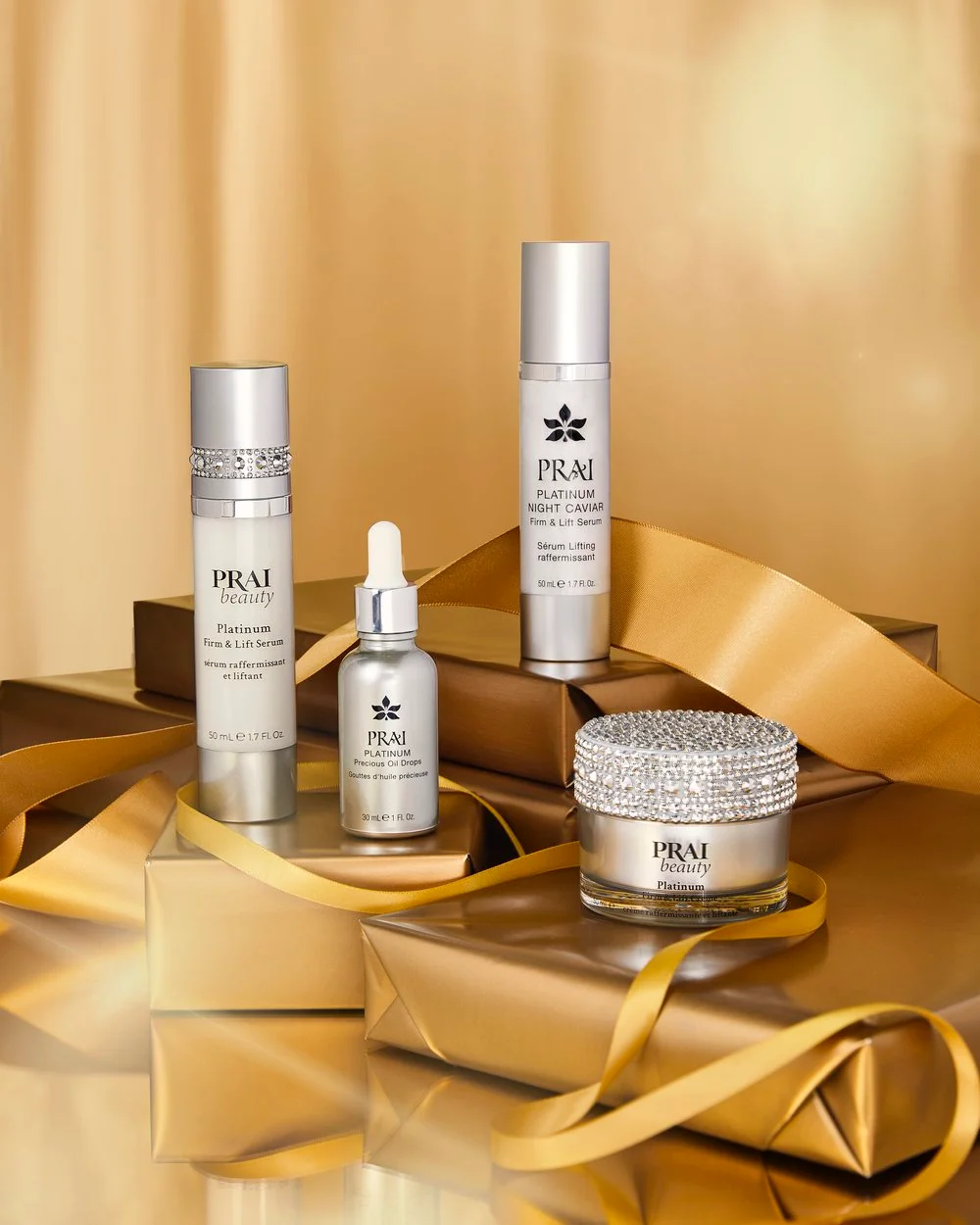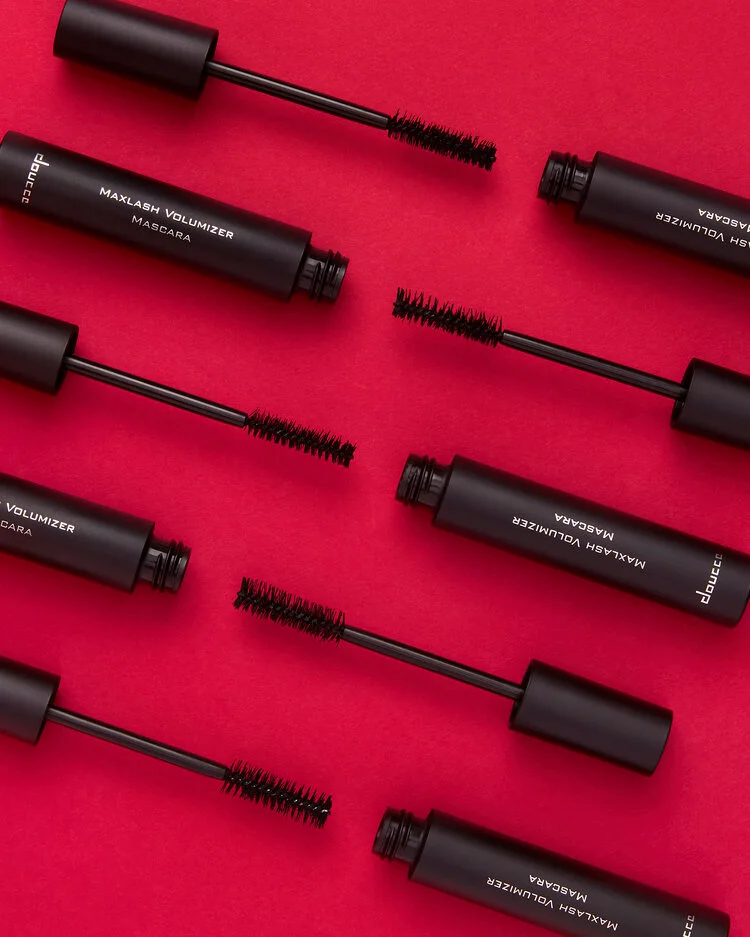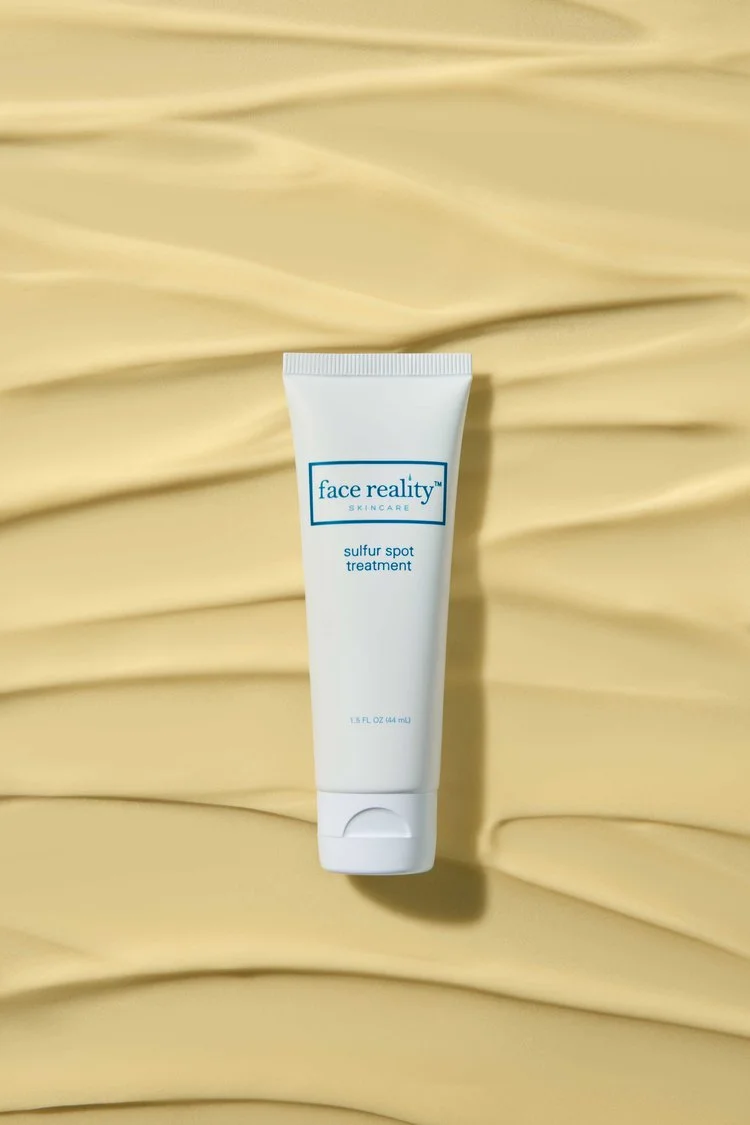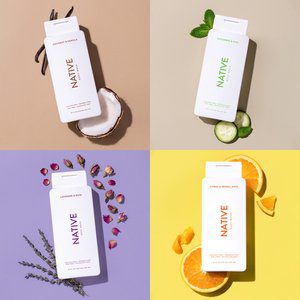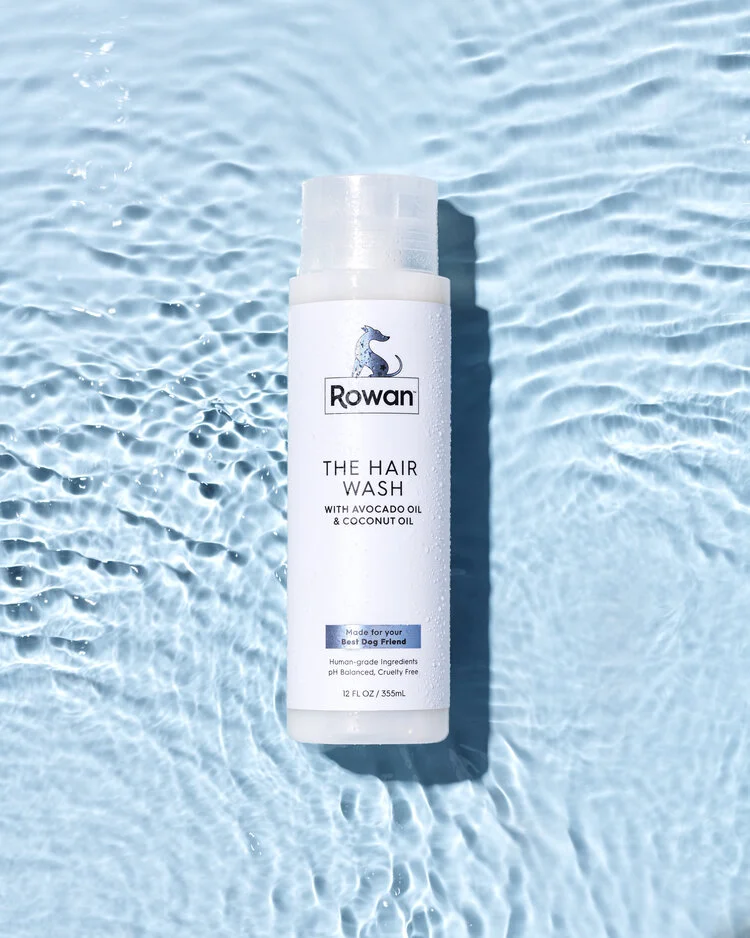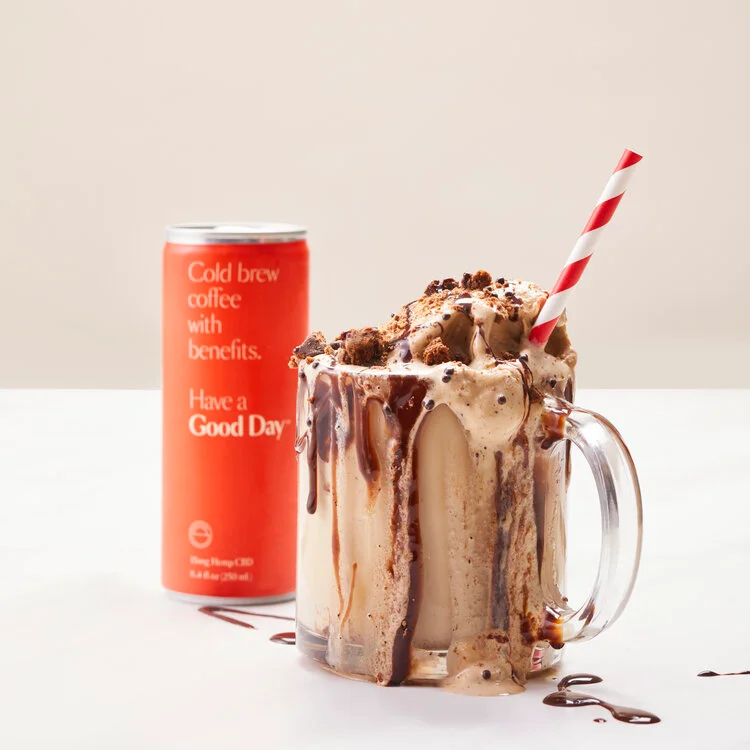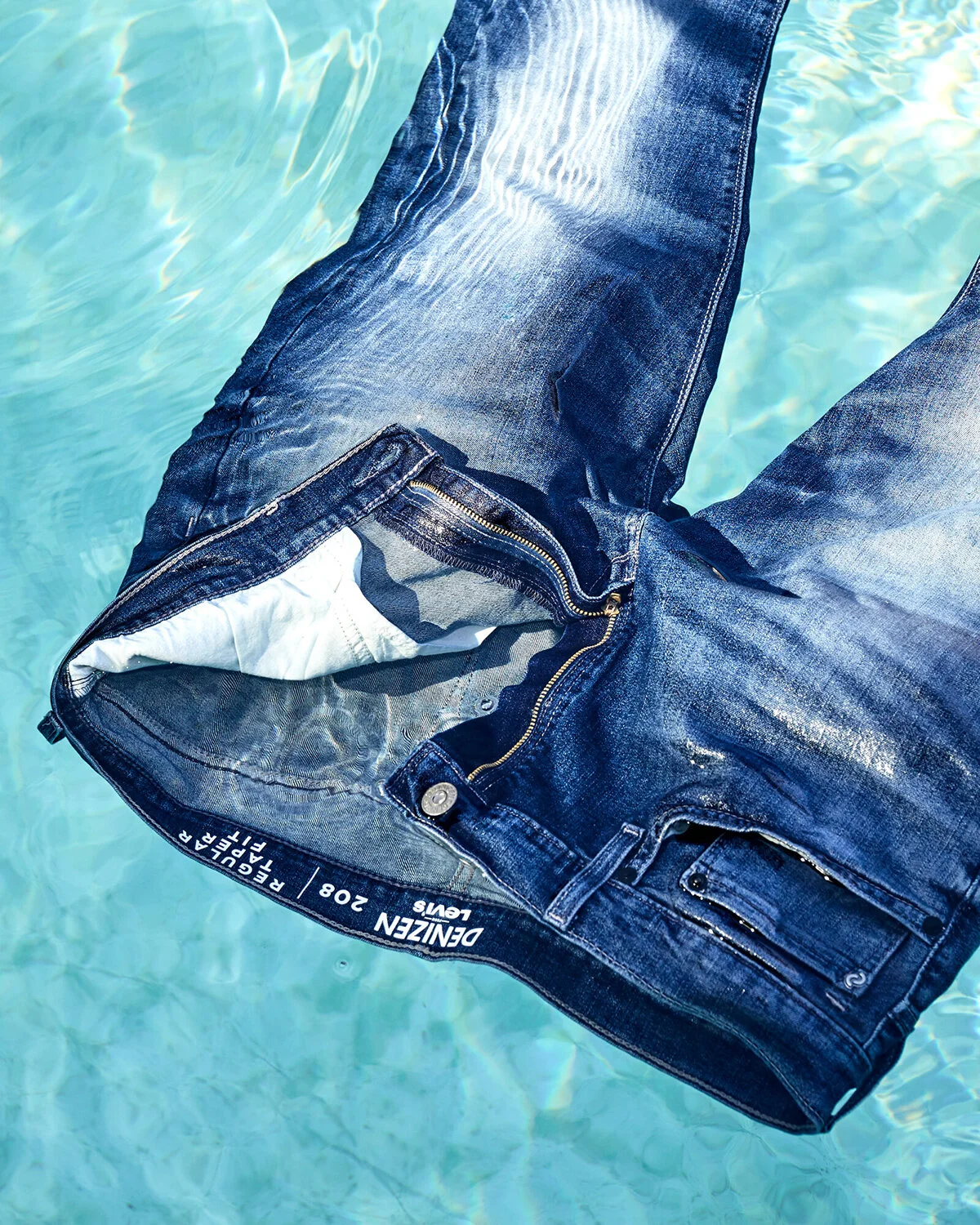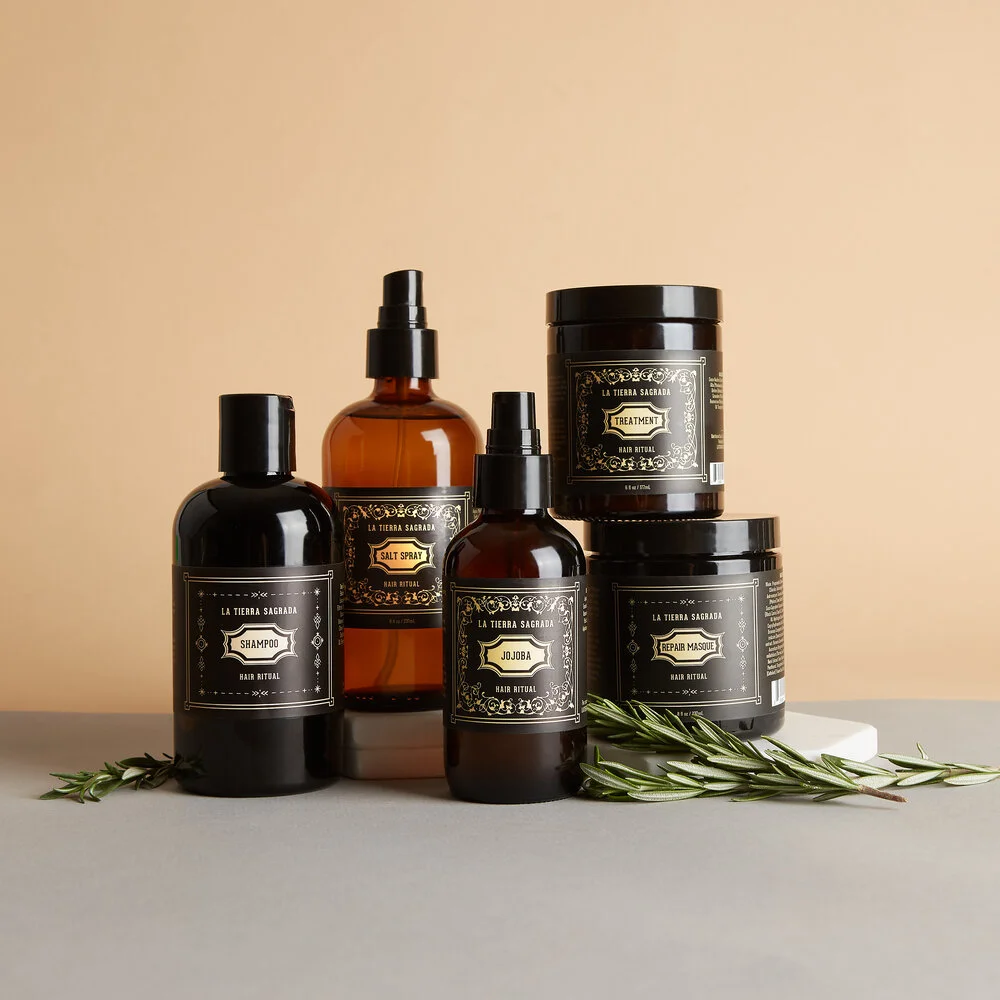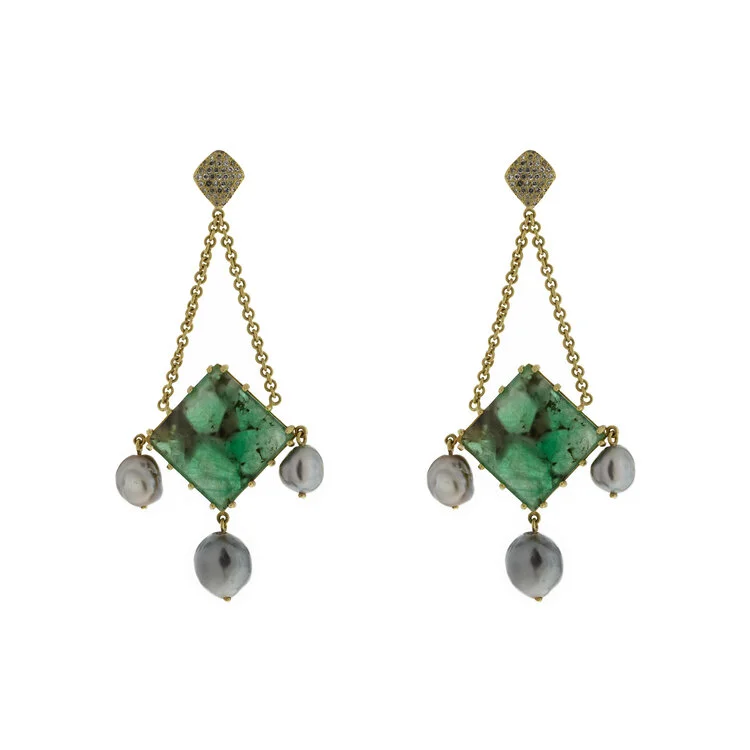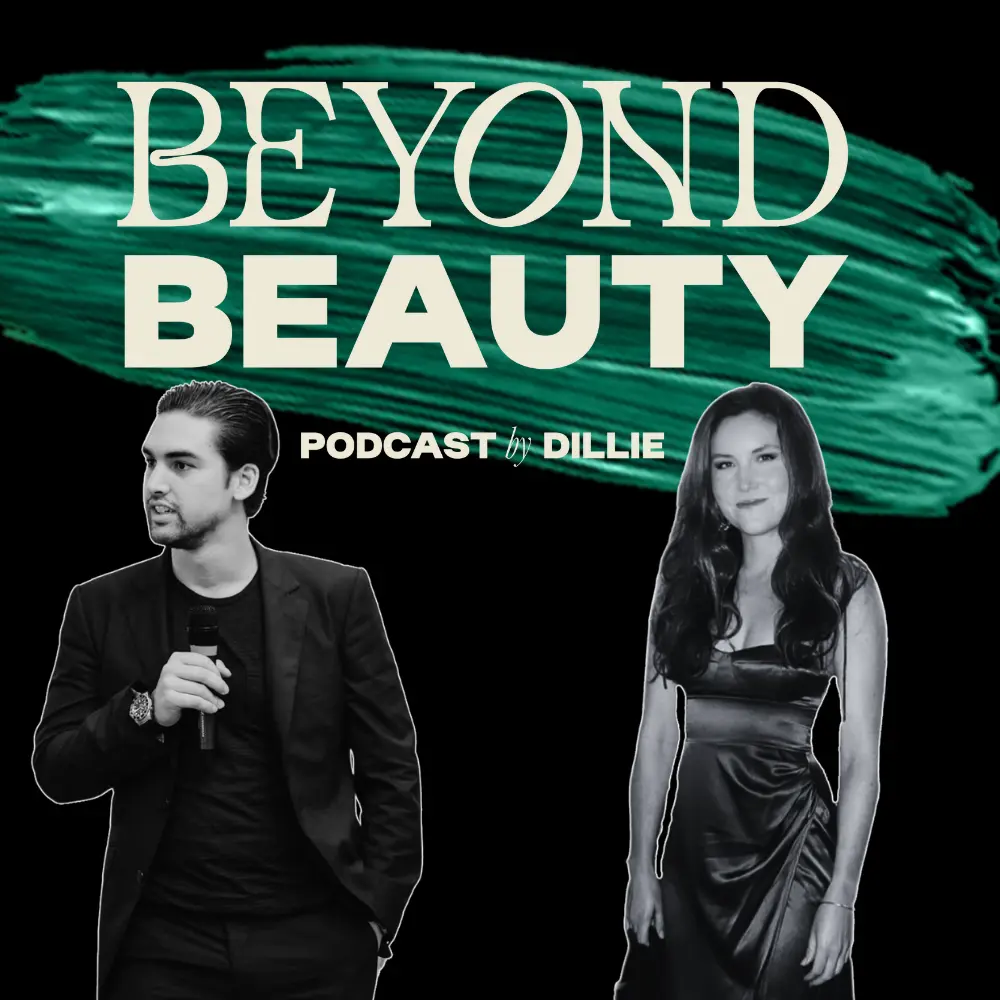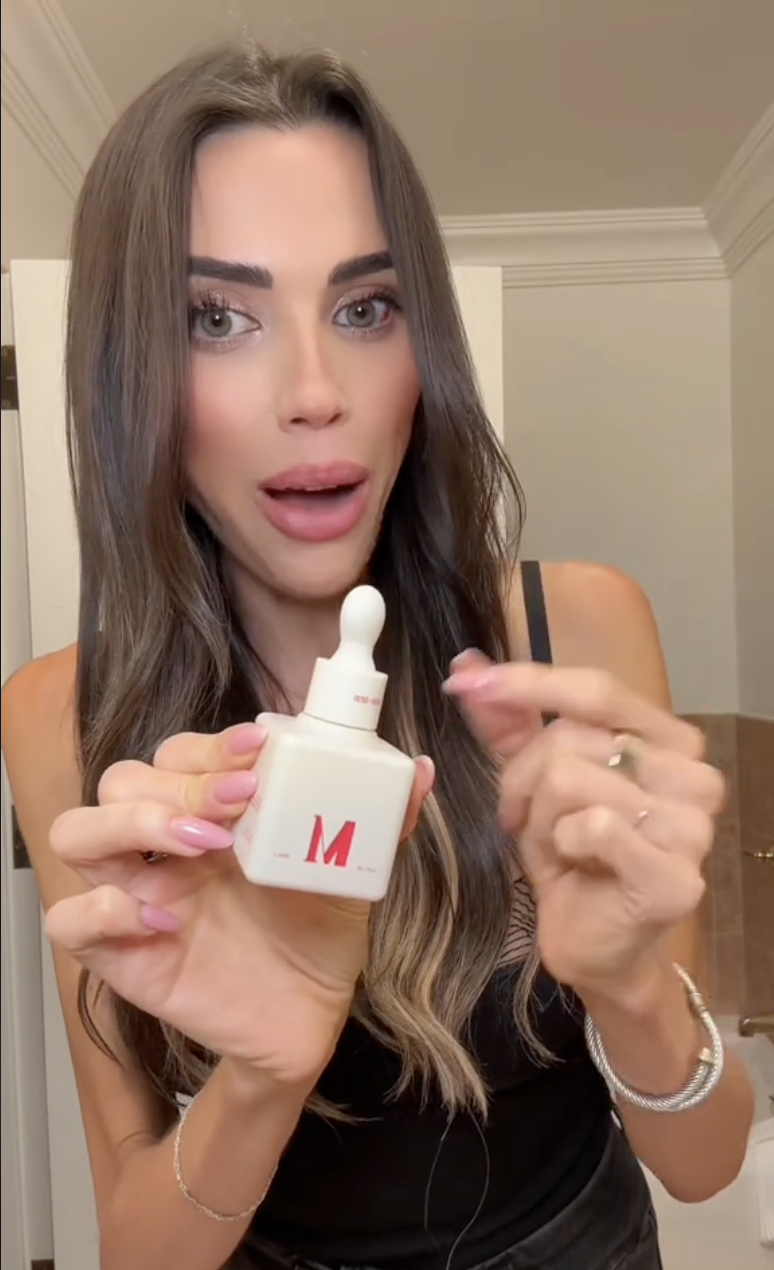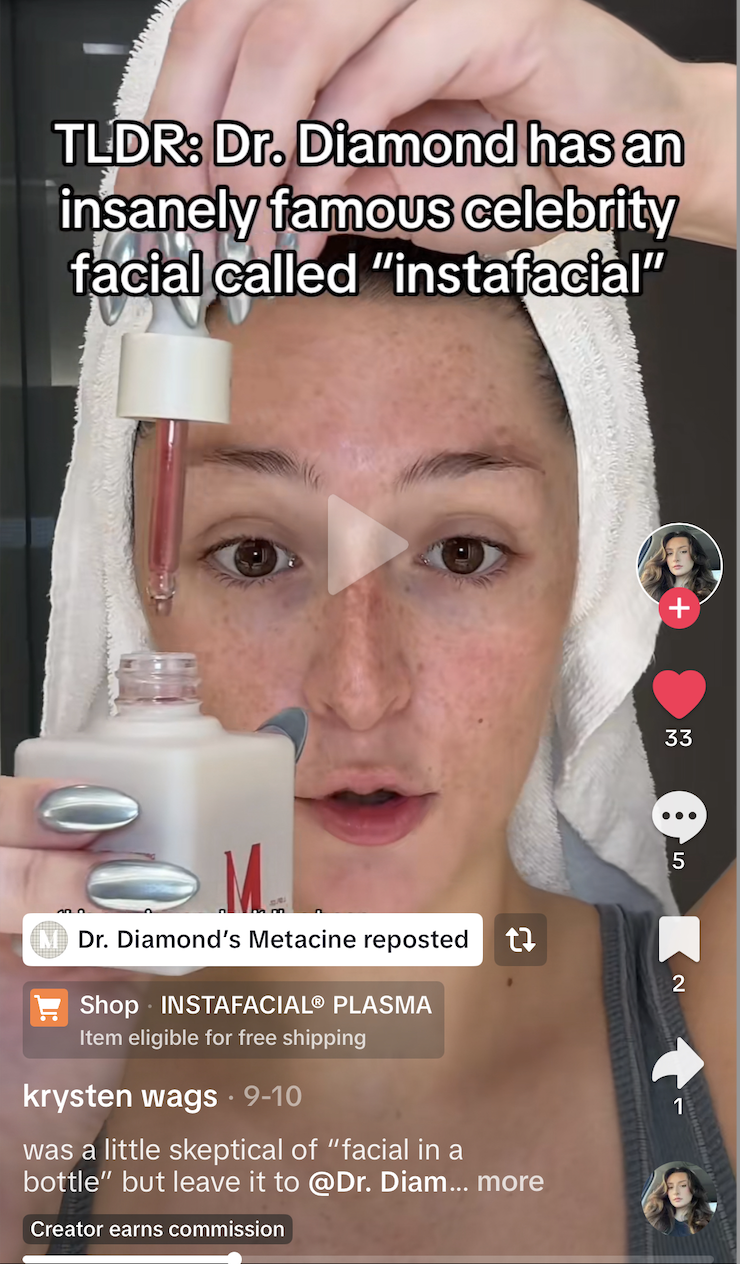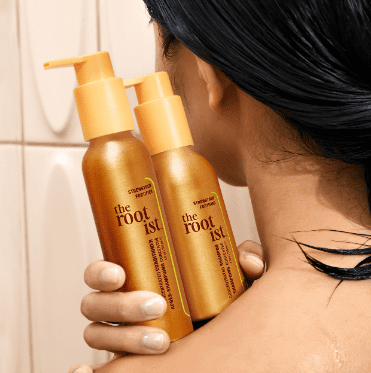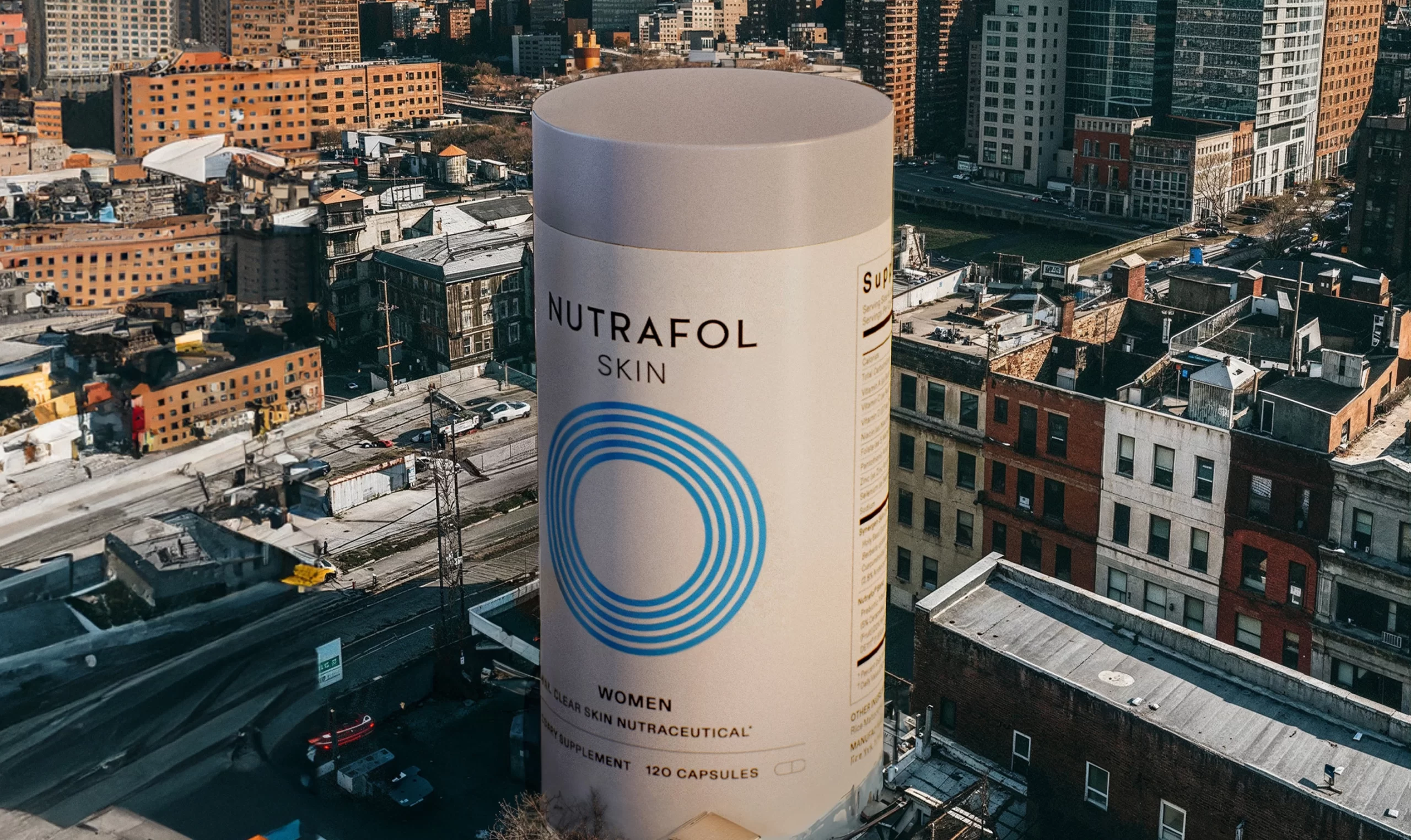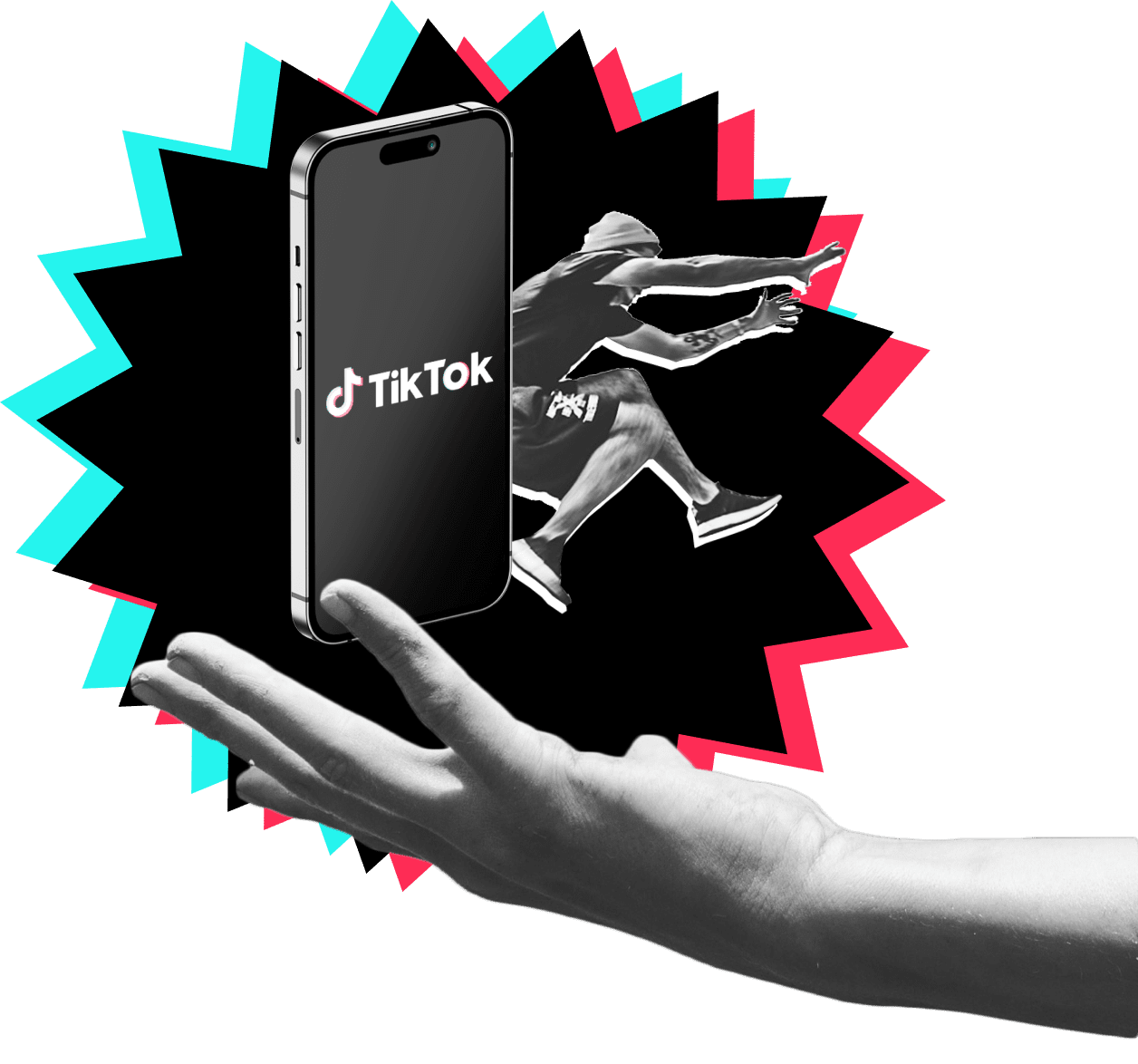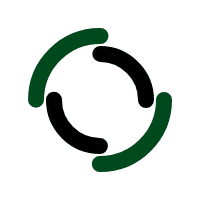In a recent episode of the Beyond Beauty Podcast, the host and guest Manica, a seasoned investor with a background in investment banking and private equity, delve into the intricacies of venture capital, particularly in the consumer and beauty sectors. Manica, co-founder of Campfire Capital and currently involved with Topknot Ventures, shares her journey and the lessons learned along the way. This blog post will break down the key insights from the episode, offering actionable advice and thorough explanations for aspiring entrepreneurs and investors.
Manica’s Career Journey: From Investment Banking to Venture Capital
Manica’s career trajectory is a testament to the evolving landscape of finance and investment. Starting in investment banking from 2005 to 2010, she transitioned into venture capital, driven by a passion for supporting emerging brands. Here are some key takeaways from her journey:
Early Experiences: Manica’s initial work on large deals in investment banking provided a solid foundation, but her true passion lay in smaller, innovative projects. This realization guided her towards early-stage investing. Traditional Methods: During her early career, Manica relied on traditional methods like market research and in-person observations to identify investment opportunities. Despite the lack of advanced tools available today, these methods were effective in understanding market dynamics. Transition to Venture Capital: The shift to venture capital allowed Manica to focus on supporting emerging brands, particularly in the consumer and beauty sectors. This move was driven by her excitement for innovation and the potential to make a significant impact.
The Evolving Consumer Market
Manica provides valuable insights into the current state of the consumer market, highlighting the lowered barriers to entry and the surge in entrepreneurship. Here are some detailed points:
Lower Barriers to Entry: The consumer market has seen a significant reduction in barriers to entry, enabling more individuals to launch innovative products. This democratization of entrepreneurship has led to a proliferation of new brands. Challenges of Rapid Growth: While many brands experience rapid initial success, sustaining that growth is a different challenge. Manica emphasizes the importance of building a solid foundation of customer loyalty to ensure long-term success. Authentic Consumer Connections: True loyalty comes from a brand’s ability to connect authentically with its customers. This connection is crucial in a crowded market where consumers are increasingly discerning about their choices.
Product Innovation and Market Relevance
The conversation delves into the strategic decisions brands face regarding product launches and market relevance. Manica and the host discuss the balance between frequent product launches and maintaining high-quality offerings.
Frequent Product Launches vs. Quality: Manica shares insights from a founder aiming to launch eight products annually, with additional products targeting secondary market segments. The discussion explores whether focusing on fewer, high-quality products might be more effective for long-term consumer relevance. Responding to Consumer Trends: While some products may not have lasting appeal, responding to consumer trends and pain points is crucial. Failing to address these needs, even with secondary products, could be a disservice to consumers. Iconic Brands and Signature Products: The host reflects on iconic brands that have thrived over generations by maintaining signature products. This suggests that the current trend of monthly product launches may not be the best approach for long-term consumer relevance.
Community-Driven Product Development
Manica and the host discuss the concept of community-driven product development, highlighting the importance of understanding specific consumer needs within micro-communities.
Micro-Communities on Platforms: Brands are increasingly looking to micro-communities on platforms like Reddit to inform their product launches. By understanding specific consumer needs within these communities, brands can create tailored solutions. Maintaining Core Identity: Successful brands often find ways to appeal to various micro-communities while maintaining a core identity. Manica cites Lululemon as an example of a brand that started with a specific target audience but grew to resonate with a broader demographic through aspirational marketing.
The Importance of Innovation and Category Creation
Manica emphasizes the need for brands to offer standout products that resonate with consumers, whether through category-defining products or improved alternatives within established categories.
Category-Defining Products: Brands that successfully establish new categories often require a collective effort from multiple brands to educate the market and drive consumer adoption. This is evident in the rise of K-beauty, where the proliferation of brands has helped to popularize the category as a whole. Innovation in Product Development: Manica highlights innovators in the beauty industry, such as Sasha Plasvic of Ilia Beauty, who pioneered the clean beauty movement with performance-driven products. Ilia’s influence has set a standard in the industry, making clean and effective products a baseline expectation for new brands.
Navigating the Venture Capital Ecosystem
The episode provides valuable insights into the complexities of venture capital, particularly for emerging managers and early-stage consumer brands.
Fundraising Challenges: Manica reflects on her early experiences raising her first fund, noting the inherent difficulties of fundraising. She emphasizes the importance of trust between general partners (GPs) and limited partners (LPs). Evolving Venture Capital Model: The conversation explores the potential evolution of the venture capital model, where investments could be made on a deal-by-deal basis rather than through a pooled fund structure. This would allow investors to have more control over their investments and ensure that fund managers are incentivized to find high-quality deals. GP Commitments and Alignment of Interests: Manica discusses the changing dynamics of GP commitments in funds, raising concerns about the financial stake of emerging managers in the success of the fund.
Conclusion: Building a Successful Brand in Today’s Market
Manica’s insights underscore the evolving landscape of the beauty and consumer sectors, highlighting the critical role of authentic consumer connections, product excellence, and sustainable growth strategies in building successful brands. Here are some final takeaways:
Understanding Consumer Needs: Brands must deeply understand their consumers and deliver products that genuinely meet their needs to foster true loyalty. Balancing Innovation and Quality: While responding to consumer trends is important, maintaining high-quality offerings and a core identity is crucial for long-term success. Navigating Venture Capital: Aspiring entrepreneurs and investors must understand the complexities of the venture capital ecosystem, including the importance of timing, alignment of interests, and evolving investment models.
Podcast Transcript
Speaker 1 00:00:01 Welcome to the Beyond Beauty podcast, a platform to highlight the beauties industry talent, deconstruct their learnings and spark ideas for your own business. The Beyond Beauty podcast is created by daily, the leading creative agency working with the fastest growing brands in the industry. Here, we’ll interview guests from major beauty corporations, creative directors, influencers and founders, and even risk taking entrepreneurs. Our guests are not only changing the traditional beauty landscape, they’re also innovating in e-commerce, branding, and digital marketing. Join us as they share valuable advice, how they launch their business, and most importantly, ignite thought provoking conversations across beauty, tech, and marketing. Hi everyone! We’ve got here with us today, Manica. She started her career about 20 years ago, an investment banking and then in private equity, building strong relationships with executives at numerous large consumer and retail companies and realized that her passion wasn’t working with investing in advising much younger companies. In 2014, Manica co-founded Campfire Capital, a $32 million venture capital fund backed by over 30 current and former Lululemon executives.
Speaker 1 00:01:14 And she went on to invest in a number of brands and consumer DTC, including leading the 5 million series of the famous Fix in 2016 and being a meaningful investor in both Cotopaxi Series A and series B financings in 2016 and 17. Now, through her own investment vehicle, Topknot Ventures, Manica works directly with consumer businesses she’s investing in and advising. So far, she’s made 11 direct investments through Top Knot Ventures, and she’s just getting started. This is really cool. I was mentioning to you earlier, you have an incredible background in investing, both in startups and obviously in large corporate. Tell me about this career. We normally see careers that are very dispersed, very asymmetric. It seems like you had a little clarity in terms of what your area of expertise is and who you wanted to work with. So how did that happen?
Speaker 2 00:02:04 Yeah, it’s funny when you look at your career at this point, in hindsight, in the rearview mirror, it makes a lot of sense. But at the time, I wouldn’t have told you 20 years ago that I’d be, that I’d be at an early stage invest.
Speaker 2 00:02:16 I probably didn’t even know what that meant. yeah. Look, most. I started my career in investment banking, and I was working with much larger companies in consumer and in retail, in the consumer retail sector. And I just found the most fun I always had was not so much the big mega mergers. That’s what everybody wanted to be on there. I worked for Citigroup and there was this email that would go out to the entire bank when a deal was now. Right. So whether it was Kraft’s and Cadbury or Heineken acquiring firms or there are a few deals that I was a part of that were really big, and they’d be like this big email that would go around the entire bank, be like the deal teams that were on it, and there would be like a hundred people write your little name in there and be like, oh, that’s me. I never got. There were good deals to be a part of, but where I really had the most fun as I look back at my career, was super small deals where that mass email didn’t even really go around, and it was small divestitures, small acquisitions.
Speaker 2 00:03:11 Sometimes they weren’t even deals. They would just be presentations that you’d work on as an investment banking analyst or associate, where you’d be pitching necessarily on a bunch of early stage opportunities or trends, or that’s really where I had the most fun. So when I look back at the very start of my career in investment banking, like it was, I should have probably known that eventually I’d find my way into more of the early stage. Space is just where I. It’s just where I have the most. It’s where I was most interested for sure.
Speaker 1 00:03:42 How do you work to identify this? Companies and investment banking. So did you. What are you looking at? A specific space that you’re interested in. And then identify the companies and did the research and presented the opportunity to.
Speaker 2 00:03:54 Yeah. For that case in particular. Oh, I’m going to date myself here, but I was in investment banking from 2005 to 2010. There was no ChatGPT there were there was no people were podcasting. There’s so many cool ways to access information today.
Speaker 2 00:04:08 Back then there was good old Google and, you know, there was market research. You’d read a lot, you’d read through annual reports, you’d read. You try and get a glimmer from other research analysts on things that they were interested or covering or speaking about when they were talking about a larger sector of holes. So there were a lot of these, like deep dive kind of research reports that you could read. But when it came to like scoping out potential opportunities for acquisition, it was like good old fashioned, just like digging around. It was. Yeah, it wasn’t it wasn’t so obvious. Oftentimes it would be you’re at a grocery store or you’re when you’re in the I would like really been on the ground research. Like that’s where a lot of research happened back then. It’s very different today. But. But yeah, that’s how you would do it back then.
Speaker 1 00:04:54 Why is it so different today? Like why is it really a need to use all these new sets of tools, or is it just not time efficient? Why has it changed so much?
Speaker 2 00:05:04 I think there are a lot more resources and tools today.
Speaker 2 00:05:06 I think that there are a lot of like content creators as well in my world and consumer to stay on top of trend. I always feel like sometimes my work never ends. There’s always another thought leader that’s written a post on something, whether it be in LinkedIn or whether it’s it’s I can’t even open TikTok without getting lost in there sometimes. Like it’s almost overwhelming the abundance of resources today as a consumer investor trying to decipher what’s happening where like putting your finger on the pulse of yeah, what’s next like it’s easier in a way, because there’s more resources. But sometimes things become harder because there are so many more resources as well, and there’s so many more people to speak to, I think, today than there were back then, at least in the early stage space. So when I migrated from, like I said, I started invest in banking and moved into private equity. When I came into the early stage investment space in 2014, 2015, starting my own venture capital firm in consumer early stage alongside a number of former Lululemon executives.
Speaker 2 00:06:09 There were just so few early stage venture capitalists or early stage investors that were focused in the category. So I find today the blessing and the curse sometimes is that there are so many participants in the category now, and you can’t even keep up with you. Try and have touch bases and check in with various folks. And I feel like collectively, we make ourselves stronger by sharing our opinions very publicly on on what we see happening within our portfolio companies, within the industry at large sub segments and pockets. But there’s a lot out there now, right? There are a lot of participants, I would say in the early stage consumer investing world, and that’s not a bad thing at all. It just means it’s more crowded and oh, do I know everything’s going to do everything, but it’s just harder to keep track of now.
Speaker 1 00:06:55 Of everything, I assume. Also, there are more companies being started, right? There are more opportunities going around to everybody because it seems like it’s the barrier to entry is lower than ever.
Speaker 1 00:07:05 The barrier to success must have, you know, might become harder because there’s more competition, but there are probably more companies started now than ever before. Right?
Speaker 2 00:07:13 Maybe that’s come down a notch because of the fundraising environment in general. I think where you probably saw, in my opinion, the surge of consumer early stage CPG was probably more like 2017, 20 1820, especially during Covid as well. I think the gig economy, I think creators, I think I was having this conversation with someone about it the other day, and I think the rise of entrepreneurship has been such a great thing in aggregate. The interesting thing, insofar as consumer, is that if somebody wakes up tomorrow and decides that they’re going to be an entrepreneur, what are they going to do? More than likely they’re going to do something. Consumer. It’s what they know. We’re all consumers. We all have it somewhat invented.
Speaker 1 00:07:57 Their own problems they want to solve.
Speaker 2 00:07:59 Exactly. So you’re not going to wake up tomorrow and be an entrepreneur and decide that you’re going to cure cancer.
Speaker 2 00:08:04 You may not have that background, that skill set, that training, that that knowledge base, but I think every consumer, every person on this planet inherently knows that to be a consumer. And so I think with the rise of entrepreneurship, what do you do if you want to be an entrepreneur? I’m going to I’m going to be the founder of a stock company. I’m going to be the founder. So you saw a lot more of that. I think rise, along with the rise of just entrepreneurship in general.
Speaker 1 00:08:30 Is that one of the big markers you look at, founder of Market Fit, like somebody that truly has a sort of vertical expertise or a deep feels the pain more deeply, perhaps, than the average person, I think.
Speaker 2 00:08:43 So I go a step further than that. I think I’m not such an early stage investor where I’m just happy with powder market fit. I think that’s really important, and I think when you’re solving a problem, it needs to come from an authentic place, for you to rally troops around you, whether it be employees that you’re attracting, talent that you’re recruiting, retailers that you’re convincing, if it doesn’t come from a really authentic place, that becomes difficult.
Speaker 2 00:09:09 But in terms of what I look for, I’m a little bit of a step further, and I want to understand that. I actually want to understand that you really know who your consumer is. I think you only really understand. I think you have an idea of who you think your consumer is when you start a business and consumer, but I don’t think you really actually know until you launch and until you have some visibility on, okay, I can figure out the mousetrap. I can figure out how to get people in the door. How do I get people to repeat? How do I really breathe that loyalty and that strong connection with my consumer? I think that’s I think you can only really tell who your consumer is when you can see evidence of them coming back, and that sometimes takes a little bit of a longer time. And I would say it’s past the point of founder market fit. It’s really product market fit.
Speaker 1 00:09:54 It’s interesting. It feels like if you go back six, seven years, you had the era of like cheap Facebook ads, right? So you can just continuously acquire new customers over and over again at a very reasonable cost of acquisition.
Speaker 1 00:10:08 Right. And then nowadays we’ve seen this big shift with brands, which is we got to focus on loyalty, we got to focus on retention. We got to focus on repeatability. This, this people have to come back because it’s become so expensive to steal these customers away from a different product. Many times companies are launching competing products. Right. So this is not a net new customer into the category. They’re taking it from somewhere else. And so they’re paying a big premium for that. And they’re scratching their heads thinking what would prompt this person to come back to us? The product has to be very good in the first place.
Speaker 2 00:10:42 Yeah, I think the product has to be really strong. I think there’s a lot out there and cutting through the noise. It’s just become increasingly difficult and I think the consumer’s just becoming they become much more discerning as well. I don’t think they’re as keen to pull the trigger on something if it’s if it’s just okay, great. A celebrity brand ambassadors behind you. There’s there needs to be more.
Speaker 2 00:11:07 It needs to be deeper than that. I think if you’re telling me to do away with the face wash that I’ve been using for the last ten years, than to try, I really understand what I need to understand as a consumer, what’s so different about it and why it will work for me. I think that’s really getting down to knowing your consumer as well, really understanding their points and understanding what it is about your product and brand that’s going to resonate with that specific consumer.
Speaker 1 00:11:32 One of the things that we’ve also seen a lot of is you have you have brands that, you know, those that have accomplished a certain degree of success fairly quickly. The churn is much greater, right? Like this. Brands that sort of come up. They might have caught a trend on TikTok. They blow up for about a year and a half, and then they start dying off very quickly because they were not able to find the next big wave to right. Do you also find that those cycles are speeding up significantly and like, how do you evaluate this on an investor because you’re looking for sustainability? Right.
Speaker 2 00:12:07 So I’ve spoken about this a few times before and I I have a really specific point of view on something that grows really quickly and overnight, and I tend to run for the hills when I see that really scares me. I think if you’re just as quick to rise, there’s large. There’s a big chance that you might be really big and fall and quick to fall. Not not to say that always happens. It’s just I’ve seen that more often than not. And, and I think, yeah, I think it’s why do.
Speaker 1 00:12:33 You think that is. What’s the kind of correlation whether the markers that define that behavior.
Speaker 2 00:12:39 What? Sorry, I don’t know. Are you asking why it. Is that a brand? That’s when you.
Speaker 1 00:12:43 When you see one of these companies, right? They’ve got a skyrocket success. Maybe even a shorter time frame, like six months. What are some of the markers you look at to think this might be something sustainable, that they’ll continue going up, or this is something that might be a flame out in six more months?
Speaker 2 00:13:01 Yeah, it’s to me it’s loyalty.
Speaker 2 00:13:03 Right. It’s is there evidence of your consumer coming back? And when you don’t have evidence of that? Because it’s just I figured out the most popular in.
Speaker 1 00:13:09 Science and forget it. Yeah.
Speaker 2 00:13:11 Yeah, I think it’s I’m not going to say it’s easy to convince a consumer to transact once, but it’s easier. I think what’s really difficult is to win their loyalty. And so I think that I think when you’re also like blasting something out in the universe and hoping it sticks and it does stick, but it sticks so quickly, I think it’s really hard for you to be able to tell who your consumer is. going to stay and be loyal as well, like you put it out there. The consumer today also seems to be excited about hopping on one thing to the next. So it’s what you said, right? It’s. Is this just another case of that, or are you going to have the longevity with your consumer?
Speaker 1 00:13:52 What is what are some of the things that you’ve observed? Keep these people coming back.
Speaker 1 00:13:57 Is it they connect with the product? Is the effectiveness. Is it that the products that have solves a big pain point for them? Are there things that are common among those that are able to accomplish that kind of repeatability?
Speaker 2 00:14:10 Yeah, one for sure. Is it a great product? I think that if the consumer believes it’s a great product, if they feel that it’s feeling a need or a void or a gap in their existing routine, whether it’s beauty and they feel like it’s performing better than what they already have in their vanity that they’ve tried, right then they’re going to come back. So I think product is for me, product trumps everything. Like, do you have a great product? Does it work? Does your consumer believe it works? That’s the other piece of it. And a lot of that is marketing. But you might have the best product in the world. But if you can’t successfully convey to your consumer that it does what it does, it’s going to do, and then you’re dead in the water, too.
Speaker 2 00:14:48 Yeah. I think those two things are really important. It’s tough sometimes when you launch and you have a single skew or like 1 or 2 things. I think that becomes difficult for me as a, as an investor to see that, that you have growth within the overall category that you’ve innovated in, potentially. It’s not that you have to own their entire routine. It’s often that you use a cleanser of something and a moisturizer or something else, but are you going to be able to branch out from that one thing? So sometimes I find with these TikTok trends, whether it’s like a new blush or a new something like, are you going to be able to innovate beyond that and really convince your consumer to purchase, too? And that’s tough in the early stages and then goes viral really quickly.
Speaker 1 00:15:32 Along the lines of what you mentioned, educating the consumer. What are your thoughts on category defining products versus products that come into an established category? That might be just a better alternative than what’s out?
Speaker 2 00:15:45 I think there’s room for both.
Speaker 2 00:15:46 Yeah, I think there’s room for both. I’ve seen both. I think that any time that you’re trying to disrupt a category, whether you’re doing something completely new that’s never been done before or whether you’re just trying to create noise with something with a slightly different shade of newness, I think there’s room for both. I don’t think it has to be one or the other. I guess when I think about new product innovation for either an existing brand or a new brand, it’s does this product have the capability of being that ride or die desert island product? Is it so great that or is it just a nice to have. And it was great. I don’t know if I’ll use it again, but that’s what I think about when I think about new product development. Or speaking of a founder about it the other day, and she was speaking about her launch strategy. As we’ve got eight products and you’ve got B products and C products, and every year she wanted to have an A product, right. So a product that was just so superior, so innovative and then made me wonder, what’s the point of having B and C are you launching for newness? Is it.
Speaker 3 00:16:54 What you want to be your.
Speaker 2 00:16:56 Product and what’s the point then if it’s not an A? It made me wonder. And listen, not that I’m not that I should be writing the book on new product innovation at all, but it did make me. It did make me wonder, what’s the point of launching newness unless it’s an A?
Speaker 1 00:17:09 It’s interesting. Yeah. I wonder what her thought process was behind that. If it was like a Trojan horse strategy, which.
Speaker 3 00:17:15 I think is a fair.
Speaker 2 00:17:16 Thought process. I think a lot of founders and a lot of retailers and probably a lot of investors want to see you have a calendar of newness, because it means that if you’ve got a great base of loyal consumers will come back for it. It’s a way to increase sales and. But what’s the point of having a launch of something? Everybody comes so great. Mission accomplished. But then they never come back again for it. And it ends up being like this view that’s on your shelf. That looks good.
Speaker 2 00:17:46 It’s fine. Watts. And it feels, I wonder sometimes within your consumer base when you launch a C product, I wonder about the relationship with your consumer in the long term. I wonder if it discredits you in some way. It’s okay. Company that I love that I’ve been a fan of, that I’ve been following for 6 or 7 years. Is this really a great product? Because the last couple times I bought it, it’s still sitting in my shelf and I don’t use it anymore. I use their cleanser, I use their cream, I use their whatever. But the last time, like I fell for that trick. Like I don’t really use it anymore. So I just wonder sometimes if the customer is not able to discern between an, A, B, and C launch and not that you’re intentionally trying to dupe them with A, B, or C launch, but just stick with the a bucket. You know.
Speaker 3 00:18:28 I wonder I wonder what it.
Speaker 1 00:18:30 Means. Is it normally B and C are just cheaper versions of product A?
Speaker 2 00:18:34 No, I think in the product roadmap, it’s not that there’s a playbook, but from what I see, typically a brand wants to launch 2 or 3 new things a year.
Speaker 2 00:18:43 But like I said, this founder, the way they described it to me was the idea being she’d like to launch an eight product once a year and then have two other product launches that are more B and C buckets. And yeah, listen, it just made me stop and wonder, are you better off just launching one product a year and having it be an A?
Speaker 1 00:19:00 I’m wondering even less than that. I’m thinking like when you think of, like the brands that have withstood the passage of time and generations, it seems like they’re quintessential brands that have had this like hero or signature products that have lasted generations on it. And I’m thinking, what if instead of what’s happening today, which is we have we have brands that are launching products monthly every single month. And so I’m wondering if that’s the best strategy to become relevant in the eyes of your consumers, or if you say, I’m going to stick to this, you know, handful of products, I’m going to make those so extraordinary that you’re going to just continue to consume this and use this for years to come.
Speaker 3 00:19:44 Yeah, yeah. And the other side of the.
Speaker 2 00:19:46 Coin too, is that in any given year, there may be a trend or a pain point that your consumer is highlighting. And while you think it may not have longevity forever, are you doing a disservice to your consumer by not launching something they’re asking for? That’s the other side, right? And it may very well be in the grand scheme of things like A, B or C product. But maybe it’s my dog. But you may. Yeah, you may be doing a disservice to your consumer by not pulling the trigger on the B and C launches, if that’s what they’re asking for.
Speaker 1 00:20:20 One analogy I think about a lot is I remember when when the iPhone came out. Right. People had cell phones. People had cell phones with screens and keyboards, and you would tap into your BlackBerry. And then this guy comes along and says, we’re going to make a phone with a touch screen you’re going to use with your finger. Nobody was really asking for that, right? Nobody was really asking for a touch screen because nobody really thought about it.
Speaker 1 00:20:44 It was it was this category of redefining product that that change habits for people. So instead of people expressing a pain point, which was I need a better way to use my phone, it was like, let me bring you something that is going to change your habits. I wonder what the equivalent of that with DTC who has done something so signature that that is almost changed the habits of people and can even be replicated in day to day consumer products.
Speaker 2 00:21:11 I think there’s some real OG innovators amongst us and beauty. I will like tip my hat, raise a wand or whatever. Like I’ll say, I think Sasha. Plastic from Ilya. I think she really was did something very innovative for her time and has inspired generations of other beauty brands to like. She was doing clean before. It was like clean with performance like that I think was real. I don’t know if you want to call it a category defining innovation leadership like that, I think kickstarted a whole wave and that we’re still in. In fact, it’s become table stakes today, almost to power clean with performance.
Speaker 2 00:21:54 Who’s not doing that?
Speaker 3 00:21:55 Like it’s like a lot of.
Speaker 1 00:21:57 Passage to even get the.
Speaker 3 00:21:58 Attention. Yeah.
Speaker 2 00:21:59 Like I think there was there was life before Ilya. There’s life after. Honestly, I think that brand and that founder inspired the world of beauty. Really.
Speaker 1 00:22:09 There is another thought process, and this is something we’re seeing a lot of this year, which is around community forest products. There is obviously a world of micro communities living on places like Reddit. And if you’re able to tap into those communities, understand what they want. It’s a goldmine of information about what consumers feel and what their pain points are, what solutions are seeking. And it feels like a lot of the big retailers and big conglomerates where we’re talking to are starting to think in terms of launching new products with the idea of micro communities, like how can we build a response to a direct pain point that a micro community is experiencing? Instead of saying, we’re going to come up with the next, I’m going to expand a personal care line, or we’re going to launch another X, Y, and Z product that’s already established just to create a competitor in the space.
Speaker 1 00:23:07 they’re trying to understand what this micro groups are looking for and then creating direct, tailored responses to those micro groups. I wonder if there’s going to be a world where we end up with a product for every little slice of the population that experiences a problem.
Speaker 2 00:23:23 Many pockets of micro niches of communities. I think they share a lot in common with each other. You’re a beauty founder looking to create a brand in a way. You want to be able to appeal to a larger audience and demographic and catered to like a wider breadth of consumer. If you can find ways to appeal to different micro communities within that same product that can cater to needs of. I think that’s I think that’s smart. I think the other thing I’ve learned as well is that it’s interesting. Lululemon would probably be an example of this, and one of my portfolio companies being an example of this right now, chip Wilson created yoga pants for people to go to yoga classes. Right. But it became so aspirational in a way. If you read this book, if you speak to him, he’ll tell you about ocean, which was his muse, and she was 32 years old.
Speaker 2 00:24:14 And, you know, he knew how much money she made, Seemed like there was all sorts of was really building product for ocean. however, I think in doing so, he managed to create something that ended up being aspirational to so many different communities and micro communities and demographics. And, and I think that was really smart. And I think that brands that can create product potentially with one audience in mind, but knowing that this could and should and maybe like be aspirational and resonate with a wider group of micro communities, I think that’s when you really nail the jackpot. Like Hit the jackpot.
Speaker 3 00:24:52 Became a.
Speaker 1 00:24:52 Movement almost.
Speaker 3 00:24:54 Yeah.
Speaker 1 00:24:55 It became a sort of established sort of signature where I wear a Lululemon pants to travel, for example. I don’t do yoga, but I love traveling with it because they’re so comfortable.
Speaker 3 00:25:05 And yeah, I know.
Speaker 2 00:25:06 It’s also really interesting about that. I speak to a lot of founders in beauty, actually, in particular that feel that they’re coming out with something like truly innovative and it’s like within a certain segment and no one else is doing it yet.
Speaker 2 00:25:18 And it reminds me a lot of a bit of the Lululemon story, too, which was back in the early days. There were no patents on black stretchy pants. No, but there weren’t, right, I think. I can’t speak for him, but I would imagine he would say that he knew he was creating a category, and if he was doing a good job at creating that category, and if he was successful in that venture, that there will there would be a world of other copycats that would do the same thing, and they would. But there’s one thing that they weren’t that they couldn’t take from him was true technical innovation in product and brand. Right, I think that. So I wonder sometimes with a beauty founder that’s creating the first this ad, and you almost need a whole village around you within that same category. When you’re creating a category to rise for you to be successful, your wins end up being their wins and vice versa. like Ayurvedic beauty’s a great example. One of my six beauty investments happens to be in a brand called Sergeant.
Speaker 2 00:26:17 It’s an Irish based beauty brand. Lisa founded the business in 2015 when they were like maybe three other founders trying to penetrate the beauty, you know, category. It was super nascent, super early. And if you look at the landscape today, she is thrilled with the success of the Ranaut’s of the world, the fabled names Shazam, kicks of Rani there like proxy, there’s so many different. I’m naming five of probably 2030 brands out there. If you’re doing something new and if you’re doing something somewhat innovative in a new category, you almost need a whole world of other brands to to pop up. Look at K beauty, right? Is there just one K beauty winner? You know, I wonder sometimes if founders realize that when they’re starting something new that if you’re doing something really new, you almost need a lot of people doing that same new thing for it to really catch on.
Speaker 1 00:27:11 They say educating a market is very expensive, and those companies are almost doing the educational work for you for sure.
Speaker 3 00:27:19 Yeah.
Speaker 1 00:27:20 It’s out in the world. It’s funny, I have an anecdote with Lululemon. I back in 2014, I think I met, I think it was one of the heads of technical innovation at lemon at a dinner, and I was talking to him for a couple of hours. I was so impressed with the level of sophistication they had and how they thought about fabric and how they thought about clothes. I’d never heard anything like that before. And and my inexperienced mind, I figured this guy is a really ahead in their thinking. And this is before the explosion of Lululemon. And I remember a week later, I went and I bought a significant amount of stock from the business because I thought, this guy’s a really thinking long term and value. Fast forward seven years later, that stock bought in my first house. Wow. Because it multiplied by eight. amazing prizes. I bought it.
Speaker 3 00:28:11 For a lot to be grateful for.
Speaker 1 00:28:13 To Lululemon.
Speaker 3 00:28:14 For you.
Speaker 2 00:28:14 That’s awesome.
Speaker 3 00:28:15 I remember.
Speaker 1 00:28:16 It was. I hold it dear to my heart because and I still have pants from from that time when.
Speaker 1 00:28:21 So it’s truly a testament to an incredible product. Yeah. And and an incredible value that the company has been able to build. And, and this is why the idea of kind of sustainability today with brands as they come up. It’s such an interesting topic because the turnover is so big in this world, and especially in this, in this BPC beauty personal care category, the building kind of category defining sustainable products that, like you said, grow sustainably over time versus peaking and then evaporating. It’s so interesting trying to decipher how someone gets to do that, and also how someone gets to retain the interest of audiences and consumers. The generation of TikTok is, I feel every week there’s something, there’s a new trend, there’s a new product to respond to that trend.
Speaker 3 00:29:09 There’s a new song.
Speaker 2 00:29:10 Or dance to learn.
Speaker 3 00:29:11 A new song or.
Speaker 1 00:29:12 Dance, and you see this kind of you start to see this race from brands to leverage those strands to be able to align and push new product out. And it feels like it just gets faster and faster every time.
Speaker 1 00:29:26 And I wonder, what is this going to go in two years? So like how does someone how does it an early stage consumer brands survive and thrive in a market.
Speaker 3 00:29:34 Like I think.
Speaker 2 00:29:35 I think you just need to have a really clear understanding of who you are and what you’re delivering. And you can’t ignore trends. You can’t ignore culture, you can’t ignore. Tick tock. But I think, I think you just need to stay really true to who you are. Yeah. As a brand, I think that’s really important.
Speaker 1 00:29:54 Yeah, I think it’s it’s interesting even sometimes.
Speaker 3 00:29:56 It’s a long.
Speaker 2 00:29:57 Game. Right?
Speaker 3 00:29:57 It’s a long game.
Speaker 2 00:29:58 It’s a long game. Think about the best brands that are in your wardrobe, that are in your vanity, that are like like the best brands that you can think of. I promise you have a story of how they were not quick to rise and built overnight completely. I think I really do think that’s true. And and. Yeah. Look. Time will tell.
Speaker 2 00:30:19 Right? Time will tell.
Speaker 1 00:30:21 What do they call it? The ten year overnight success.
Speaker 3 00:30:24 Yeah, exactly.
Speaker 2 00:30:25 The ten year overnight success. I have so much respect for founders that, you know, especially insofar as, like raising capital. Somebody posted something on LinkedIn the other day, and it was so interesting to me as an investor to read this perspective from a founder. And we talked about raising capital and what that means and bootstrapping and for as long as you can. Because really, what does happen when you raise capital is the clock starts ticking, and you should only raise capital when you’re ready for that clock to start taking. I think that’s really important. And I think when you raise capital too early and you haven’t gone through really hard times, It’s not a blanket statement, but how do you know that you will really stick this out until the end? Yeah, I feel like there’s sort of an attitude among certain founders, not all at all, but among certain founders, there’s this perspective that an investor that puts in capital essentially kisses that capital goodbye.
Speaker 2 00:31:22 And if it comes back, great. If it doesn’t, great. And that’s true, by the way, I invest off my own balance sheet. I don’t have investors. It’s my own capital that I’ve worked very hard for. When I write a check, I have conviction and but it’s not my grocery money. It’s not my kid’s money for tuition. Like it’s money that I am prepared to walk away from. Of course. However, I think there is a view amongst founders that when you raise capital like it’s fine to lose it.
Speaker 3 00:31:46 And I think, what do you think.
Speaker 1 00:31:47 That comes from? What what does it feel like it’s always been that way or is it more of a race?
Speaker 2 00:31:52 It’s always been that way. But I think for a long period of time before all the consumer funds that were out there, right. Founders did have to bootstrap. If you speak to, I still don’t know if he would be okay with me telling the story, but one of my LPs in my prior fund is a super successful Vancouver based consumer founder, Charles Cheng.
Speaker 2 00:32:09 He started Vega, the protein powder business. I think he started it with Brendan Rodgers, co-founder back in, I want to say the late 90s, 2002 somewhere around there. And he jokes about this. I’ve heard him tell this story years ago, where back in the day there were no consumer focused like early stage buttons. He did take a check from BMG years later, after Whole Foods and a whole bunch of other big growth moments for his brand. But in the early days he had 17 credit cards and I hope I’m not misquoting, but 2 or 3 mortgages on his house. Something crazy, by the way. Like probably really financially irresponsible.
Speaker 3 00:32:44 Nowadays, but like he could not.
Speaker 2 00:32:46 Afford for Vega to not work like it was like it was he. He was all in. And I think with the rise of as much funding as you had seen in call it, I don’t know, 2015 15 to 2020, whatever period that bothered me. I wonder sometimes if a founder has as much drive, determination and and conviction when they raise money too quickly because there’s an attitude rightfully, which is that investor that invests is prepared to lose their money.
Speaker 2 00:33:17 But is that a good thing? So I think there’s a question I’m probably not probably butchering it, but it was the question that this founder was asking about. Just like raising capital too early. Does that founder think that does that founder understand that when he’s he or she or they’re raising capital from a fund that the underlying investors in that fund may be pension plans, the institutional capital that these are people actually, that is their future money. That is. So you taking their capital, do you raise his point was, do you realize the responsibility that you’re taking on? Are you prepared to take that on? Do you have the conviction yet to be able to take that on and have you muscled through basically enough? And it are at a point where you should be taking that capital. That was the question he was he was asking. I thought it was really, I’ll find it for you and I’ll send it to you later. But I thought it was I thought it was really interesting.
Speaker 1 00:34:07 Do you feel there’s been a correction in the past 3 or 4 years where we’re going back a little bit to prior to 2014?
Speaker 2 00:34:14 Yeah, I think so.
Speaker 2 00:34:16 I think so, I think for a few reasons. I think for a few reasons. One, I think there were a dearth of early stage consumer funds that raised capital that probably shouldn’t have.
Speaker 1 00:34:27 Not raised a fund to.
Speaker 2 00:34:29 And that have not been successful in raising a subsequent fund. Two, three, four. I have many friends that have started early stage funds in that era that are incredible investors and are fortunately closing their second funds. Now they’re third funds. But it’s been really hard, and I think the overall reason why it’s been so hard. Two things, I think one, the rules have changed. These expectation of returns to limited partners, limited partners or the investors within underlying funds. I think the expectations have changed in terms of when they want their money back and it changed overnight. It feels like.
Speaker 1 00:35:00 Meaning they want shorter cycles.
Speaker 2 00:35:02 Yeah, I think that when an LP invests capital into a fund, you can mark up valuations all you want and say that, oh, this thing I invested in is now worth $1 billion.
Speaker 2 00:35:13 That’s great. Like where is the money? You know I think that LPs have gotten. Yeah. And maybe rightfully so are demanding return of capital sooner. Right. They’re demanding distribution sooner. They’re demanding exit sooner. And I think that there are there are many GP’s out there. I was just looking at DPI for 2020 vintage funds because I have a friend that’s that’s now closing her second fund and she just had an exit. And I’m super proud of the results that she’s obtained for her investors. But she’s managed to return all of her capital back to her investors with a 2020 vintage fund. So with one exit, she sells a whole portfolio of other great businesses. But with one exit, she’s managed to return the entire fund. And we were looking at at DPI marks together DPI distributions to paid in capital. And I believe her fund is now at A1X. And we were looking at what top quartile is for 2020 vintages. So when I say 2020 vintage, it means the venture capital fund that raised its capital that started deploying in 2020.
Speaker 2 00:36:11 The top number to beat from a DPI perspective, I believe was like 0.1 X or something crazy. Yeah. So that means to be a.
Speaker 3 00:36:21 Sponsor.
Speaker 2 00:36:22 Quartile, meaning you’re the top 25%. So if there’s 100 funds out there, you’re like within the top 25. So to get into that club okay, all you needed to have done with the 2020 Vintage Fund is return back. Like what, six, ten, $0.15 on the dollar so far? That means you have a portfolio of other things. Not to say that it’s all dead, but that’s all you’ve returned. And so I think it becomes increasingly difficult to convince limited partners to invest in your funds when returns are just taking much longer to realize. And I don’t know if we had that foresight back in 2018, 2019, things seem to be growing as fast as they were and things seemed. Oh yeah, like exits are coming. Great. This is valued at like $1 billion now. It’s valued at like it hasn’t come. Returns just haven’t come to fruition yet.
Speaker 2 00:37:11 And so I think that the class of GPS, general partners, funds that are in the market today trying to raise subsequent successor funds. Right. So they raised their first fund, didn’t call it 2018, 2019, 2020. I think they’re having a really difficult time raising their subsequent funds because the results are just so shitty in aggregate.
Speaker 1 00:37:30 And so the investors, the LPs in this case, just are more hesitant to return to the same.
Speaker 2 00:37:37 Yeah, I think they’re being more discerning. I think the point of view, when I raised my first fund, I had one institutional investor. So it was a $32 million fund. We had one institutional investor, BDC capital, which is like the largest, you know, institution here in Canada in in venture Adventure anyway, and their point of view when they made investments. I think maybe it’s the right point of view, the wrong point of view at the time it was. We invest in emerging manager. Our view is not just to invest in the first fund, but it’s to invest in the second fund and the third fund and so forth.
Speaker 2 00:38:05 And I believe I don’t know this for a fact, but I believe that many institutional investors shared that point of view back then, and I don’t know if they share that today. And I don’t even know if there is is inclined to invest in emerging managers because they’re seeing results unravel real time. Yeah, it’s not fun out there. I often hear founders say that it’s not fun to fundraise, and I’m like, it’s not fun to fundraise for anything. A company, at least with a company, you can go out there and say what you’re raising money for. Could be like, this is a phone I’m going to market. This is what I this is what you’re investing in. When you raise a fund, when you go to a limited partner, family office, institution, you name it. When you go to an institutional investor in LP and say, come invest in my fund. You’re basically asking them for a piece of paper that they sign that commits $1 million, $10 million, half $1 million, whatever their commitment amount is.
Speaker 2 00:38:59 But they have no idea what you’re going to end up investing in. They’re just trusting you to make great decisions, right? They’re limited partners and and they’re trusting you to support your companies and to be able to add value and realize results along the way and strong returns. But they have no idea. They’re just committing. And I actually have a whole point. We could have a whole podcast on this, but I often get asked, like, when am I going to raise another fund? When am I raising my next fund? I’m like, I’m very happy doing my own thing. I was one of those rare investors. There’s one of those rare funds that I actually returned. I achieved a DPI over one x, so I was I’m in that case where you gave me $100, I gave you back $100 and I gave you a profit, and we’re good now. And so I have I do, I have I made my last funding to top quartile 20 2015 vintage. I think the system is so broken today.
Speaker 2 00:39:49 The GP like relationship, I think that I think there’s really strong incentives to just raise larger funds, collect more management fees. Yeah. And I think that, look at I don’t think it’s fair actually, because in the case of let’s say you do have a fund and you have a great return and you’ve returned one X on one investment, let’s say as a manager, you’re actually not seeing any carried interest until you like meet your hurdle. And so you sax in a way for the like the fund manager. Because even if you have that great exit and you managed to give everybody back their money, you can actually only start collecting carried interest. So the winnings, if you were getting really deep here, but typically it’s around 20%, 25%. What it means basically is if I make you a $100, I get to keep 20 or 25, right? And you eat into that carried interest once you’ve returned an entire fund and typically at least 8% would be the hurdle rate typically. And so you might have a great exit in this case.
Speaker 2 00:40:52 Right. And I don’t know the specifics of this person’s fund. I don’t know what their hurdle rate was, but I would imagine there was probably no carried interest because great, you’ve had one great return. You’ve returned the fund. But that’s not good enough either. So that creates you want to see your manager win alongside you as well.
Speaker 3 00:41:09 But surely in this bigger, wonderful.
Speaker 2 00:41:11 Moving adventure anyway, to a world in which maybe we do away with funds, maybe it’s on a deal by deal basis. Maybe. And that way the manager gets to high-five with you and they have a high five. You’re not committed to a blanket portfolio of things. Maybe the limited partner becomes less limited in that they can pick and choose and cherry pick what they invest in. And and maybe the pressure stays on you to find great investments because you’re not getting like management fees unless you find great investments to invest in. I think there’s a lot of pressure to put that capital to work, because investors LPs pay on how much they’ve committed, regardless of how much you’ve deployed.
Speaker 2 00:41:52 So if you have a $100 million fund and you’ve only deployed $10 million, your investors are still paying fees based on $100 million.
Speaker 3 00:42:00 Even if it’s.
Speaker 1 00:42:00 The big funds, right? You have funds being raised now, or especially in tech, perhaps more, but they’re living off the management fees. They’re 100%.
Speaker 2 00:42:09 And that’s not the goal, right? The goal of management fees is to put a bit of a house over your head and to make sure you’ve got a bit of a team. But yeah, just the way I’ve seen, at least in venture, at least in consumer, at least in the early stage, it seems to be like there are incentives that that make it such that there’s not as much pressure to return capital.
Speaker 1 00:42:32 So the mechanic of an angel syndicate in a way, right. You put together a deal, you gather the investors, you deploy capital into that deal, you as a as a deal syndicator. You take a chunk of that the opportunity. But it’s almost like a success fee, right? You’re not collecting those fees.
Speaker 3 00:42:50 And yeah, I wonder if the.
Speaker 2 00:42:51 World and I wonder if the world moves to that. I wonder if the world moves to at least in the early stage space, it could go hustle, go find a great deal when you find a great deal and come find us. I think the other interesting thing we could talk about this for hours is a whole podcast on this. But I think the other issue right now that I see with a lot of emerging managers, back in the day when I raised my first fund, there were four of us in the GP. It was a $32 million fund and our GP commitment, all four of us together collectively, was about 2.5 million, 2.3 to 2.5 million. Some of us were larger than others, right? We were all I was 32 years old at the time, right. Like I you know, there’s there’s different people at different stages. But it was my own GP commitment in my own first fund was about 10 to 20% of my net worth. That’s how much I put into the fund.
Speaker 2 00:43:38 And in aggregate, if you think about two and a half over 32 million? We were about 8% of the fund was our GP commit. Today, that percentage of how much the GP needs to own in terms of their own dollars in a fund is far less. I spoke with an emerging manager the other day, and it was like less than 1% was going to be their GP commit or 2% maybe. And I was like, it’s nothing like, how do you like, how do you even have enough skin in the game? So I think there’s I think yeah, I think the GP commits gone down, which I think creates not as strong of a financial alignment of interest. Anyway, sorry, this is like a Beyond Duty podcast.
Speaker 3 00:44:14 This is no this is amazing. We’re going really.
Speaker 2 00:44:16 Deep on the mechanics of.
Speaker 1 00:44:18 This is amazing because a lot of the times this is this is what founders are faced with and, and understanding the incentives on how to talk to funds and what funds are looking for.
Speaker 1 00:44:28 And you know, what is a good deal. yeah.
Speaker 2 00:44:31 Look, the takeaway is that if you’re raising capital from an institutional player, from a fund, they’re very focused on delivering a return to their investors right now, more so than ever, picking and choosing when you raise venture capital. You’ve probably heard many founders say this and investors alike. The clock really does start ticking and weigh more today than ever before, I think. Is there a clear path to exit? I used to think naively, actually joking with another investor about this the other day. I used to think naively, maybe a decade ago. I used to think a great business. Don’t be focused on the buyer. There’s always a great buyer for a great business. I don’t think that’s the case. I think what I’ve learned is that not that you need to start a business knowing exactly who you’re, who your exit is. But when you go to raise venture capital money, when you go to raise third party capital money, when you raise other people’s money to fund your business, you better be prepared to understand and have a very clear picture of who you will ultimately be able to sell this business to, how you will ultimately able to monetize and create value for those investors coming in.
Speaker 2 00:45:32 I think it’s I think it’s a really naive point of view to believe that every great business has a buyer because we all know that’s not the case today.
Speaker 3 00:45:40 This has been incredible.
Speaker 1 00:45:41 I feel like it’s been a bit of an intro to a master class.
Speaker 3 00:45:45 Oh my God, I don’t know about that.
Speaker 1 00:45:46 How direct to consumer VC works. So I feel like we might need a second version of this.
Speaker 3 00:45:52 Conversation any time.
Speaker 2 00:45:53 Any time I’m here for it. Listen, I overall, I’m hugely supportive of the immersion manager. I was just in New York a couple months ago, and I brought together about a dozen or emerging managers and and institutional investors. I love a thriving ecosystem of emerging managers and consumer. I think it’s really important for the overall industry. I think changes are coming, I really do.
Speaker 1 00:46:15 Hopefully for the better. Yeah. At least, at least in the long run.
Speaker 3 00:46:19 Yes, yes.
Speaker 1 00:46:21 Well, Manica, thank you so much. It’s been amazing.
Speaker 2 00:46:24 You’re so welcome.
Speaker 1 00:46:25 I’m sure we’ll talk again soon.
Speaker 3 00:46:28 Thanks. Thank you.












